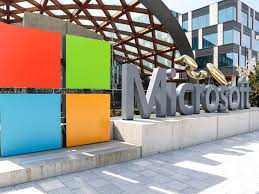Home Loan EMI to Ease After RBI Repo Rate Cut: What It Means for ₹30 Lakh Borrowers

IIE DIGITAL DESK :The Reserve Bank of India (RBI) has announced a 25 basis point cut in the repo rate, bringing it down from 6.25% to 6% in its latest Monetary Policy Committee (MPC) meeting. This decision, aimed at providing relief to borrowers and stimulating economic growth amid global uncertainty and weak domestic demand, is expected to directly impact home loan borrowers across the country. For individuals with existing or planned loans — especially those with a ₹30 lakh home loan — the EMI burden could see a noticeable reduction.
The repo rate, which is the rate at which the RBI lends money to commercial banks, has a direct influence on lending rates. With the cut, banks are now likely to reduce their Marginal Cost of Funds-based Lending Rates (MCLR) or external benchmark-linked rates, depending on the nature of the loan agreement. Most retail home loans today are linked to the RBI’s repo rate under the external benchmark lending regime. As a result, changes in the repo rate typically translate into quicker revisions in borrowers’ interest rates.
So, how much will the EMI change for a ₹30 lakh home loan?
Let’s take an example. Assume a ₹30 lakh home loan taken for a tenure of 20 years at an earlier interest rate of 8.25%. Before the RBI rate cut, the monthly EMI would be approximately ₹25,521. With a 25 basis point reduction, the revised interest rate could drop to around 8.00%. At this new rate, the EMI would come down to about ₹25,093 — a reduction of ₹428 per month. Over the entire tenure of the loan, this could result in total savings of more than ₹1 lakh, assuming no further changes in rates.
While the EMI savings might not seem substantial on a monthly basis, it can make a significant difference to middle-class households managing tight budgets, especially as living costs continue to rise. Moreover, for those with higher loan amounts or longer tenures, the benefit will be more pronounced. Those planning to take new loans might also consider locking in lower rates now, especially if market conditions become less accommodative in the future.
However, it’s important to note that the actual benefit to borrowers depends on how quickly and to what extent individual banks pass on the rate cut to customers. Some public and private sector banks have already hinted at rate reductions, while others are expected to follow suit in the coming weeks.
Experts suggest that this is a good time for borrowers to review their home loan terms and consider switching to lenders offering lower rates if the difference is considerable. Additionally, borrowers on MCLR-linked loans may benefit by moving to repo-linked loans for faster transmission of rate benefits, provided switching costs are minimal.
The RBI’s shift to an accommodative stance also indicates that there could be further rate cuts in the coming months if inflation remains within target and growth remains sluggish. This offers a ray of hope for borrowers and home buyers who may be delaying property purchases due to cost concerns.
You might also like!
















